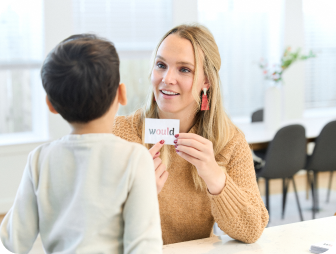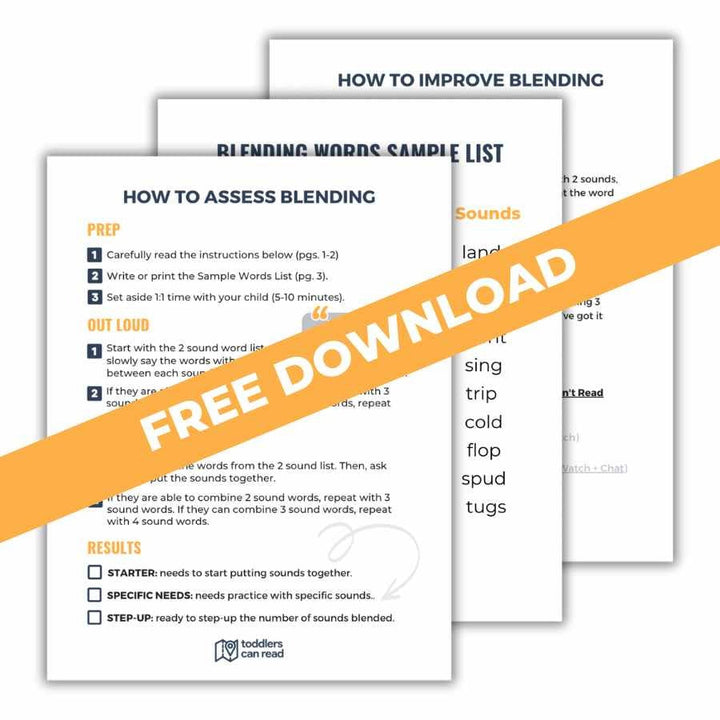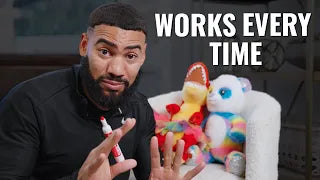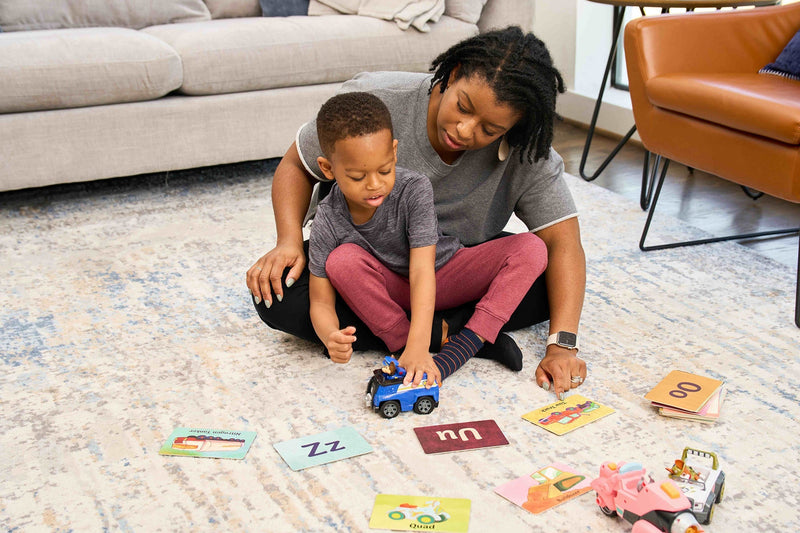So you just finished teaching your little one the 26 basic letter sounds.
They've passed one of the biggest reading milestones, and you're excited! You're proud of your little one and of yourself. And you feel like you're finally ready to start teaching them how to read their first words or first books!
But when you put that first book in front of them, they're clueless. They slowly pronounce each sound but can't put them together. Or worse: they say, "I don't know," and give up without trying.
You wonder what's going on in their head. You ask: "How do I teach my child to read on their own?"
Should you start teaching them to memorize sight words? Should you get some BOB books and have them practice reading until they get it? Would it be better just to make up your own words for them to practice?
The truth is: There are many things you could do after your little one learns their sounds, but only a few things will give you the information you need to help improve your little one's reading.
So in this post, I'm going to show you two things you can do now (and in some cases, even before they know all of their sounds) to help get them reading more (and longer) words on their own!
If they know the sounds, can't they just sound it out?
Many parents think that once their child knows their sounds, they'll be able to read. So they buy a bunch of books, show them to their kid and tell them to "sound it out."


Your child will get to reading books on their own... but it will take some time.
But just knowing the sounds isn't enough to read words independently. And if your child is at this stage, you've probably realized this.
You see, there's another skill that goes into reading called "blending," and this is what helps children put all of those different sounds together into words. This skill needs to be TAUGHT (just like you did with their letter sounds) for them to learn it.
And to teach this skill, you need to know where they're starting.
Step 1: Find out how many sounds they can blend together OUT LOUD.
There are two parts of blending words. First, OUT LOUD. Then, WRITTEN DOWN.
And being really good at HEARING and combining those different sounds out loud will help your little one with SEEING and reading those different sounds when they're written down.


Now just because your child can't read words yet doesn't mean they haven't built some of the skills needed to begin reading on their own.
In fact, one of the most important skills your child can build to improve their reading is the ability to hear and combine different sounds to make a word. This skill is blending.
To find out how many sounds your little one can blend together out loud: start by testing simple, 2 sound words.
You just need your voice and theirs- no materials are needed to do this. Simply say two sounds with a big pause in between and ask them to put them together quickly.
Here's a quick script to help:And here's a downloadable word list.
If you don't want to think of the words on your own, you can download this freebie with simple 2, 3, and 4 sound words to test your little one's blending.
Make sure to start with the 2 sound words, and don't move on unless they can blend them well. If they can, then move to 3 sound words, and if they can blend those, then move to 4 sound words. Your goal is to see what they CAN and CAN'T blend yet!
Once you finish this out-loud test, make sure to note the following before moving on to writing the words down:
- How many sounds can they blend together out loud?
- Are there any specific sounds they have trouble with?
If your little one struggles with this activity or doesn't understand what to do just yet, that's completely normal. The more you practice this with them and model what you want them to do, the more sounds they'll be able to blend and the easier this will become.
Step 2: Find out how many sounds they can blend together WRITTEN DOWN.
Good news! Step 2 is almost identical to Step 1.
The only difference is: that instead of saying the sounds out loud, you'll write the sounds down for them to read.
So, for example, you might look at the same list of words and write down a few of the 2 sound words on a piece of paper or a whiteboard. Then, you'd ask them to read those words and listen to hear how they do.


It might help if they point to each sound as they read it. If they are new to pointing, you can add dots under each sound to make it easier.
If they can read words with 2 sounds, move to words with 3 sounds. And if they can read words with 3 sounds, then move to 4 sounds. Again: your goal is to find out what they CAN and CAN'T read yet, so you know what to work on next.
Let's get to the "they read their first word!" moment.
We all want that "they read their first word!" moment (or maybe you're waiting for the "they read their first book" moment.)
And trust me: It will come. Teaching them all of their sounds was a huge step in the right direction. And your next step—testing their blending—will give you the information you need to know exactly where they are in their blending ability now and what to work on with them next.
So, what should you do with all of this information?
You should make a plan to improve your little one's blending ability.
If they can blend 2 sounds written down then, work on 3. If they can blend 3 sounds out loud, then work on 4. Use their current ability to plan your next steps.
And think about your practice time. Where and when will you practice blending the sounds with them? How many repetitions will it take for them to feel confident? What are your goals for them and their reading?
Because this really doesn't need to take a lot of time or effort. You can practice with them in the stroller, practice on car rides, practice during bath time, or build a routine (this is going to help a lot!) The key is finding a few minutes a day that work for you AND for your little one.
And if you get to a place where you feel like you've been trying your best but your little one still isn't making progress with blending, check out this blog post on 4 Reasons Your Little One Knows the Sounds... But Still Can't Read for some troubleshooting ideas.
I'd be so happy to help you!
I have a ton of resources to help you start teaching your little one to read, but the best support I can give you if your child is struggling to blend is my Blending Words course:
- It includes 2+ hours of course videos (learning the basics, getting started, videos of me teaching, and what to do if they're still not getting it.)
- It also has digital handouts (my blending pyramid, blending cheat sheets, and a full lesson plan!)
- Like all of the courses, I work really hard to make it step by step and easy to follow—even if you have no teaching experience and no idea how to get started.
Blending words can feel complicated. But when you know where they're starting from and what to teach them next, it can be one of the most amazing experiences for you AND your little one









